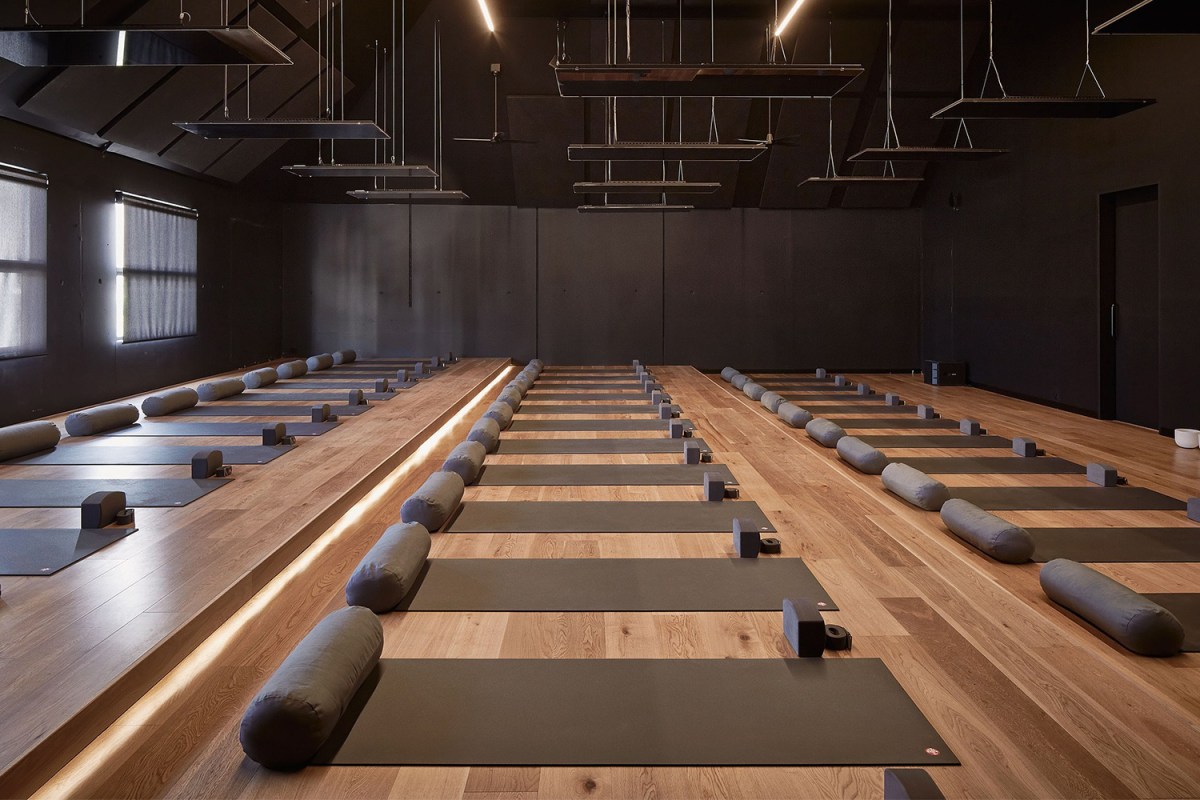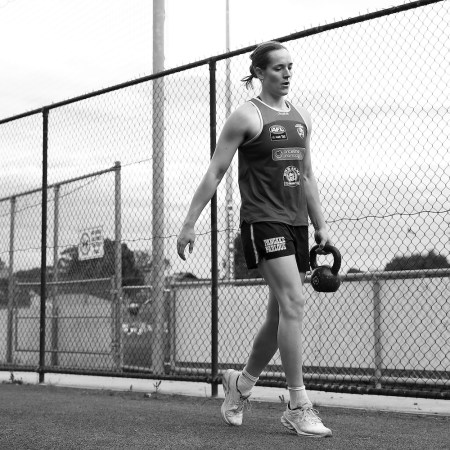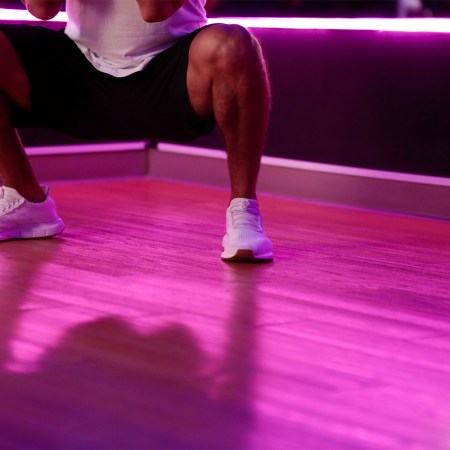Despite working out regularly, I avoided hot yoga for most of my young adult life for the same reasons children avoid eating their vegetables: My mom told me to do it once.
It wasn’t until my thirties that a breakup and a Groupon finally got me to cave and try a heated class at the now-closed Sacred yoga studio in Brooklyn. Yoga had always bored me, and my brain felt too noisy for meditation, but I loved a sauna, and combining that heat with movement finally quieted my mind.
When I finally tried hot yoga, it was impossible for me to ignore how disgusting the circumstances were, especially in a crowded class. But somehow, even when I had to dodge the rogue sweat of another yogi, I was able to stay zen. Now, after years of inferno pilates, hot HIIT and lots of jogs on 90-degree summer days, heated exercise has become my favorite mindfulness and fitness hack.
For those who’d cringe at the thought of a yoga mat making squelching sounds as it’s ripped from the floor, you may be wondering: Do the advantages really outweigh the grossness? There are certainly pros and cons, many which will almost certainly surprise you.
Why Puking After a Workout Is Nothing to Be Proud Of
Consider this a PSA to all those self-serious high school basketball coachesSteamy Pros, Sticky Cons
There seems to be a lot of upside to training in heat, according to the research. One study indicated that cyclists who trained in heat were better at regulating their body temperature, which improved performance, with other data showing similar results. Meanwhile, other research revealed that hot yoga did little to increase aerobic activity compared to “room temperature yoga.” However, the heated conditions can increase flexibility; and then there are the testimonials of professional athletes, like former NBA basketball player Joe Johnson who has been boasting the benefits of hot yoga for nearly a decade.
On the other hand, there is also plenty of anecdotal evidence that hot workouts are kind of grody. For yoga alone, one of the more popular heated workouts, alarmist headlines like “Hot Yoga Heats up Yogis… and Bacteria?” and “Hot yoga classes are the perfect place for nightmare bacteria to grow” are plentiful, but far from the titles of scientific literature. While researchers have not looked at how contaminated hot yoga studios are specifically, there is evidence that perspiring may enhance immunity by releasing an antibiotic peptide called dermcidin. Likewise, exercise in general has been found to help with building a natural defense against illness.
Hot Yoga Studios ≠ Petri Dishes
There appears to be more of a case made for immunity on paper, but every time I hear someone cough in a hot yoga class, I wonder why I paid to hang out in a warm petri dish. Fortunately, Dr. David Mischoulon, psychiatrist at Massachusetts General Hospital and associate professor of psychiatry at Harvard Medical School, assured me that cold and dry environments are more virus friendly. “I don’t think it’s more dangerous in a hot yoga studio than in the cold,” he explained.
So there is no medical reason to believe that hot yoga would be any germier than room-temperature yoga, or a gym workout. But of course, the same rules apply in the yoga studio as on the gym floor: wipe down equipment before and after, and keep as much distance as possible if there are concerns about getting sick. “The issue is proximity between people who may be infected,” Mischoulon added.
A Surprising Salve
Part of the reason why doctors like Mischoulon aren’t investigating the ickiness of hot yoga is because they’re looking into more important things — namely the anti-depressant effects of hot yoga. In an eight-week clinical trial, 33 participants diagnosed with clinical depression were prescribed two 90-minute yoga sessions a week in a 105°F room; they were compared to another 32 participants with depression who did not do hot yoga. At the beginning and end of the trial, the severity of their symptoms was assessed using something known as the Inventory of Depressive Symptomatology-Clinician Rated (IDS-CR) scale.
Although the hot yoga group did not exercise as much as instructed and only attended an average of 10.3 classes over the eight weeks, 59.3% of hot yoga attendees reported at least a 50% reduction of depressive symptoms. More surprisingly, 44% of hot yoga participants scored low enough on the IDS-CR scale that their depression was considered in remission. The group who didn’t attend yoga was not as lucky, and only 6.3% (two people) experienced at least a 50% reduction in symptoms.
“That was impressive to me, that even at a lower-than-we-anticipated dose, the treatment was powerful enough to see an effect on depressive symptoms,” lead author of the study Maren Nyer, Ph.D., told me. Nyer, who is also the director of Yoga Studies at the Depression Clinical and Research Program at Massachusetts General Hospital and an assistant professor of psychiatry at Harvard Medical School, started going to hot yoga in graduate school.
Our Verdict: Sweat It Out
At this point in the research, it’s hard to conclude one specific reason why hot yoga helped with depression, but it likely has something to do with the increased blood flow, reduced inflammation and mindfulness that come from stretching in a heated room. After personally experiencing the improved concentration, decreased anxiety, increased resilience to stress, improved sleep and better health, Nyer felt compelled to recommend hot yoga to clients when she started working as a therapist; only, she was frustrated by the lack of clinical data to support this advice.
Since teaming up with Mischoulon and other experts to test hot yoga’s potential, a growing amount of research is starting to emerge to change this. Nyer noted that it can take up to five classes to get used to the environment, and recommended hydrating ahead of time with water and electrolyte powders. At this point, it is difficult to say definitively if these findings apply to other hot workouts, or how they would compare to room-temperature yoga, but Nyer is currently conducting a follow-up study on the latter.
The research is in its early stages, but this was enough to convince me that hot yoga is a lot more than an unnecessarily gross exercise. There’s also more to the heated environment than tricking my body into greater exertion; surprisingly, it’s been a mental-health resource that has benefited me in ways that are hard to retroactively quantify. My theory is that learning to tolerate the unsavory aspects of hot rooms has made me more flexible about the unsavory aspects of life. Ultimately, the conditions yield perspective…once you wipe the sweat out of your eyes.
The Charge will help you move better, think clearer and stay in the game longer. Subscribe to our wellness newsletter today.


























